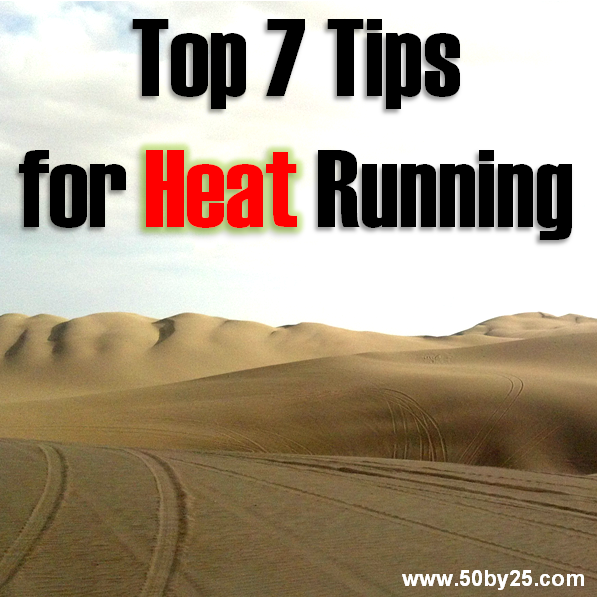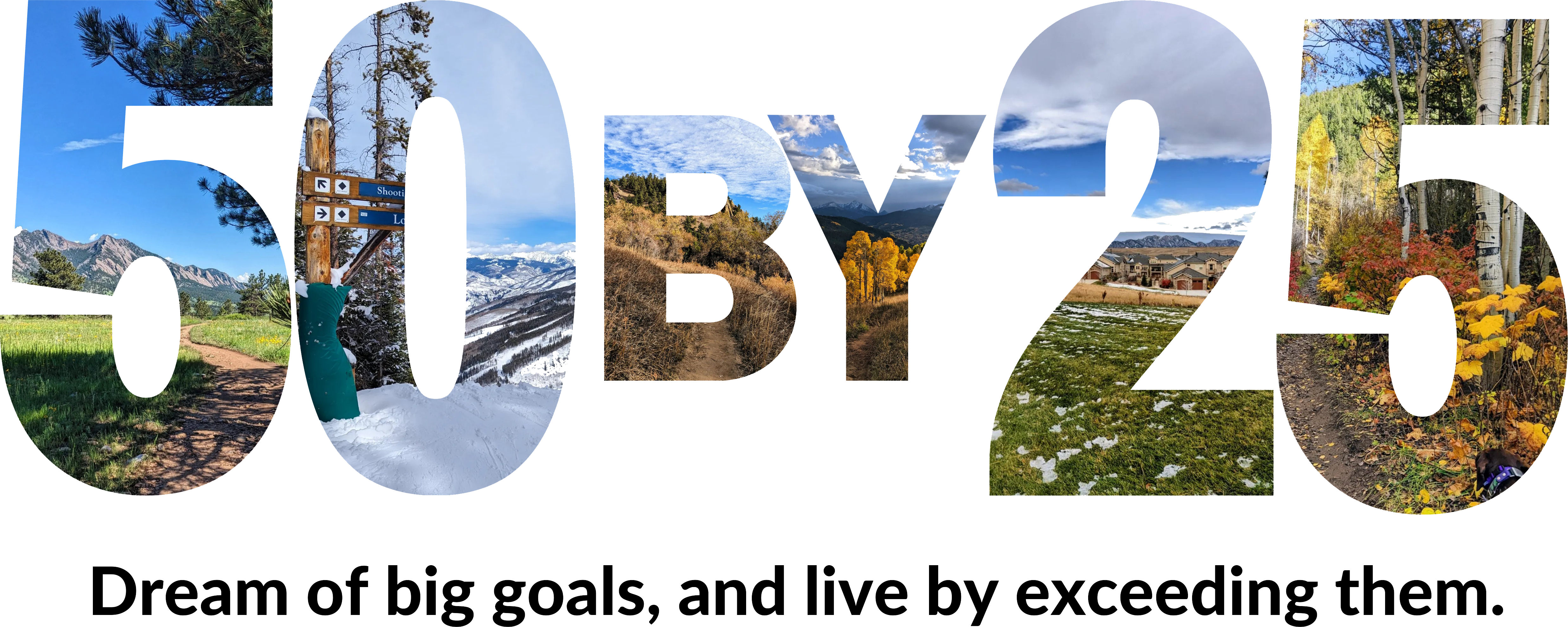It’s been over a week since the Puerto Rico Marathon, and the battle scars on my knees are still drawing comments from coworkers. No fun! But when I think back on the race, I realize that the 95 degree heat actually posed a much bigger danger than the scrapes – and I really did a poor job adjusting for it. It seems that whenever I experience weather that I haven’t dealt with in about six months or so (heat, cold, rain, etc), I forget how to handle it, and go through more “duh” moments than you’d expect with the number of marathons I’ve run. For example, I swear that I know that if it’s raining, it helps to put plastic bags over your feet (over the socks, under the sneakers) – but that’s something I always forget until mid-race when my feet are soaking wet.
As Amanda pointed out post-race, it’s especially interesting to compare my Puerto Rico finish time with the Country Music Marathon that I ran one week earlier. Although I lost fifteen minutes while trying to get my wounds cleaned up in Puerto Rico, it was right at the beginning of the race – so subtracting fifteen minutes from my finish time should approximate what I would have run had it not been for that mishap. (Note that I don’t normally condone adjusting a finish time – you ran what you ran, no excuses – but go with me on this example and note that my race report shows the accurate time.) My “adjusted finish time” of 4:49 was almost a full hour slower than my finish time of 3:55 the previous weekend at the Country Music Marathon. While I definitely didn’t push it as hard in Puerto Rico as I did in Nashville, clearly, the intense heat played a role (especially when you consider that CMM is arguably a much tougher course).
Unfortunately, beyond choosing races carefully and refusing to race in summer, we can’t control the temperature on the big day. When the temperature’s rising faster than you’re running, here are my top seven tips for running in the heat.

1. If possible, acclimate with practice runs. The first run of the summer is always much harder than the last, so if you have an important race early in the season (or if you will be traveling somewhere warmer than your home climate), start getting your body used to working out in warm weather. Try squeezing in a midday workout (or even a power walk outside in the noonday sun), or mix it up with your cross training and head to a hot yoga class. If those aren’t a possibility, even doing your regular workouts with long sleeves/pants or additional layers will help you start to adjust.
2. In contrast to that last tip, on race day, you want to dress as lightly as possible. No matter how wicking/technical the fabric, some moisture is bound to get trapped in the material and weigh you down – particularly if you’re employing the technique of pouring water on yourself to stay cool. Therefore, light-colored, lightweight, breathable fabrics are best. During the Puerto Rico Marathon, I was wishing I had the confidence to run in just a sports bra and skirt, because even my tank top was hotter than I would have liked!
3. Tip #2 may have been about what not to wear, but tip #3 is about two things you should add to your running ensemble when it’s hot: waterproof suncreen and either sunglasses or a visor. The last thing you need is to be worried about sunburn while you’re running! (Though I guess you could argue in favor of anything that motivates you to run faster?) Some experts recommend a hat to protect your scalp from sunburn, but I find that heats me up too much, and so prefer just sunglasses or a visor. If you’re able to spend a bit of extra money on nice sunglasses, look for a pair that have UVA protection (yes, you can sunburn your eyeballs, as Anderson Cooper learned last year). However, even something cheap will prevent squinting and allow you to see where you’re going.
4. Drink lots of fluids. Most sources will tell you that you should be drinking 3-4 oz of fluid per mile, but I think an easier method is just to drink when you’re thirsty and stop if you feel sloshing in your stomach (which means it’s full and you’ll get a cramp if you keep drinking). When in doubt, drink more liquids early on, and if you know it’s going to be a hot day, you might even want to try overdrinking the day before the race (when you have plenty of time to hit a bathroom without it affecting your time). See this article on hyperhydration for more on how to do that effectively.
5. While you might think the last thing you want is to go thirsty, many runners forget about another dangerous condition – hyponatremia – which can result from too much water consumption. In this case, the seemingly-conscientiously-drinking person actually has too little sodium because their system has become diluted with water! I know it can get confusing to figure out how much water is too much, so the best way to avoid this is to alternate cups of water with cups of the electrolyte drink of your choice (e.g., Gatorade, Powerade, Nuun). Again, slow down if you feel sloshing, and you should be just fine.
6. Speaking of slowing down: don’t forget to take walk breaks when you need to. As much as you’d like to think you’re superhuman, you can’t defy science. When it’s hot out, your body automatically relaxes its muscles to help keep body temp from increasing, so you’re just not going to go quite as fast as you otherwise might. (Also, on a hot summer day when you just want to skip your workout and lie around with a book/magazine, this is why – it’s biological that your muscles are trying to get you to rest.) Jack Daniels has come up with an equation that was later plugged into a great calculator for adjusted time based on heat, but the gist of it is that performance degrades about 1.55% for every 10 degrees Fahrenheit above 60F. You can run into a lot of trouble trying to beat the heat, so instead of being ashamed of slowing down in the summer, remember that it’s actually the smart thing to do. Stay alert for dizziness, nausea, chills, or dry skin (if it’s that hot, you should be sweating like crazy) – those are all signs of heatstroke, which can be potentially life threatening. If this was your goal race and it’s unexpectedly hot, don’t forget that your safety is more important than your finish time – there are always other races at which you can PR.
7. Research as far back as 2005 indicated that cooling your hands can improve aerobic endurance in hot conditions; however, it’s just in the last year that scientists are starting to understand why. Recent studies have found that almost all mammals have hairless parts of the body called arteriovenous anastomoses, or AVAs, that have variable blood flow and serve to regulate temperature. In humans, these AVAs are on the face, hands, and feet. While your feet may be tough to access while running without a special device like those expensive cooling gloves, it’s very easy to grab some ice in your hands or dump ice water on your head. (You didn’t put makeup on before your run, did you?) These techniques helped me a lot in Puerto Rico.
And finally, if you’re like me and do poorly in the heat, your best bet is really to avoid those hot races altogether. (I’m not putting this as a tip because I think it’s lame to list “don’t do it!” as a tip for running in the heat.) But there are many ways to run in the summer without having to deal with the heat – even if you don’t want to give up running for a whole season, you can stick to northern climates (Alaska marathon? Yes!) or shady trails, since dirt/grass hold less heat than paved/blacktop surfaces.
You can still run in the heat and have fun, but it just requires a little advance preparation – something I was totally lacking last weekend. But hey, now that I’ve gotten one sticky run out of the way, it’s all smooth sailing from here till Labor Day!

I feel like scars/injuries on the knees take forever to heal, hope they are starting to mend! These are some great tips for running in the heat, as much as I have read them all before in different places, it’s nice to see them all together and in good perspective. I am running Cleveland marathon this weekend and chances are it’s going to be pretty darn warm so definitely need to be prepared for the warmer weather with these things!
Good luck in Cleveland! Looks like temps will be in the low 70s there so you should have great weather 🙂
I’m wondering if I’m having hyponatremia … that might explain my getting sick after hot races. Too much water & not enough sodium. Hmm!
I don’t know a TON about it, since I don’t think I’ve ever experienced it, but it’s one of those running dangers I always hear about. Do you drink much Gatorade/etc during a race?
Hardly any. I don’t really prefer the stuff – but that could be my issue I suppose.
You could also try Nuun, which is formulated for electrolytes, or even just eating something (bananas are great)!
I actually just got Nuun and haven’t experimented with it too much, yet, but I like it. I have a 20k the first week of June though, which would be a good chance. Wondering if I could drink it before, or if it has to be during?
It’s really going to depend how much water you drink – since that’s part of what flushes out the electrolytes.
Hmm, gotcha. Well, won’t know until I try, then!